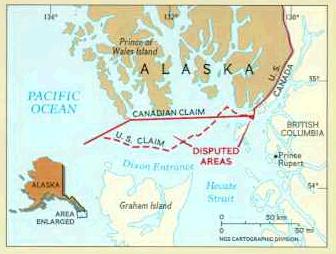On February 22, 1825, Russia and Britain signed a treaty that formally established the Alaska-Canada boundary. The treaty, known as the Anglo-Russian Convention of 1825 or the Treaty of Saint Petersburg, defined the boundaries of the colonial lands under the control of the respective nations. Britain declared ownership and control over the Pacific Northwest and Yukon territory, while Russia declared ownership and control over what was then referred to as Russian America.
Russian America consisted of most of present-day Alaska as well as several outposts in California and forts in Hawaii. Lasting from 1799 to 1867, the colony subsisted for a period of time on fur trading; however, overhunting and a number of other issues eventually led to a decline in prosperity. The settlements thinned and were ultimately abandoned, leading to the Russian Empire deciding to close its chapter on North American colonialism. In 1867, Russia sold the land to the United States for $7.2 million. Adjusted for inflation, that’s the equivalent of $133 million today.
The land dispute between Russia and Britain, which the Anglo-Russian Convention of 1825 sought to resolve, resumed once the United States acquired Alaska in the Alaskan Purchase of 1867. The dispute was eventually resolved through arbitration in 1903 and strongly favored U.S. interests over Canadian. This led to a number of Canadians feeling a sense of anger and betrayal, not directed at the U.S., however, but mainly at Britain for seeming to favor Anglo-American relations over Canadian.

